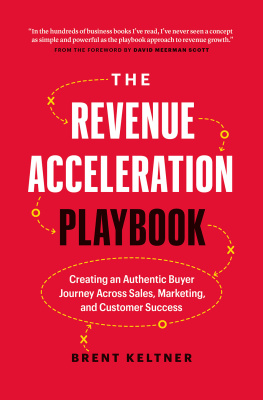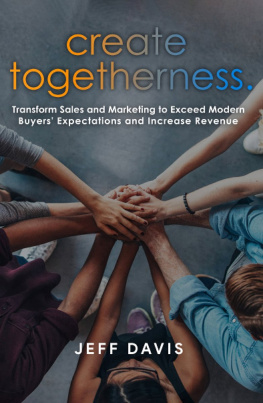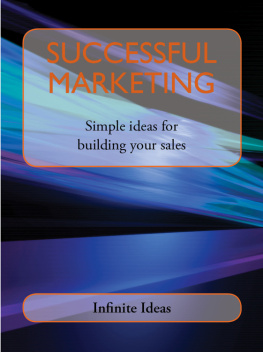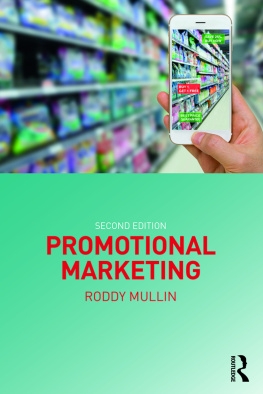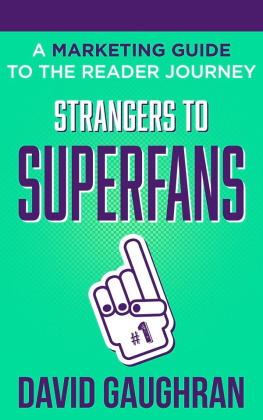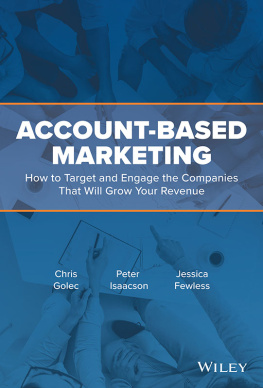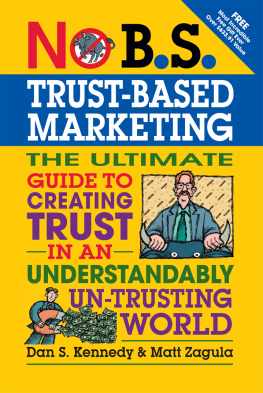Shoppernomics
Mullin and Harper are very experienced Directors and have succeeded in capturing their knowledge and expertise in this fascinating book, Shoppernomics: How to Shorten and Focus the Shoppers Routes to Purchase. The biggest disservice that nineteenth-century economists did to mankind was to assert that consumers are rational. The fact is that they remain an enigma and any insights into their behaviour is to be welcomed. I wish I had had this book and its insights and wisdom when I was Marketing Director of a major fast-moving consumer goods company all those years ago. Well done Roddy and Colin. You have made a major contribution with this book.
Professor Malcolm McDonald MA(Oxon) MSc PhD DLitt DSc, Emeritus Professor,Cranfield University School of Management
Shoppernomics
How to Shorten and Focus the Shoppers Routes to Purchase
RODDY MULLIN and COLIN HARPER
GOWER
Roddy Mullin and Colin Harper 2014
All rights reserved. No part of this publication may be reproduced, stored in a retrieval system or transmitted in any form or by any means, electronic, mechanical, photocopying, recording or otherwise without the prior permission of the publisher.
Roddy Mullin and Colin Harper have asserted their right under the Copyright, Designs and Patents Act, 1988, to be identified as the authors of this work.
Published by
Gower Publishing Limited
Wey Court East
Union Road
Farnham
Surrey, GU9 7PT
England
Gower Publishing Company
110 Cherry Street
Suite 3-1
Burlington, VT 05401-3818
USA
www.gowerpublishing.com
British Library Cataloguing in Publication Data
A catalogue record for this book is available from the British Library
ISBN: 978-1-4724-2485-3 (hbk)
ISBN: 978-1-4724-2486-0 (ebk-ePDF)
ISBN: 978-1-4724-2487-7 (ebk-ePUB)
Library of Congress Cataloging-in-Publication Data
Mullin, Roddy.
Shoppernomics : how to shorten and focus the routes to purchase / by Roddy Mullin and Colin Harper.
pages cm
Includes bibliographical references and index.
ISBN 978-1-4724-2485-3 (hardback) -- ISBN 978-1-4724-2486-0 (ebook) -- ISBN 978-1-4724-2487-7 (epub) 1. Communication in marketing. 2. Consumer behavior. 3. Consumers--Research. 4. Sales promotion. I. Harper, Colin, 1948- II. Title.
HF5415.123.M85 2014
658.8342--dc23
2014005082
Contents
List of Figures and Tables
Figures
Tables
Preface
For the authors, a period of reflection arises while their book is being prepared for print. Fortune has smiled upon us during this agonising delay. In this rapidly moving world there is a hazard that new evidence may come to light that negates some part of the recommendations and suggested actions that those for whom this book is written; brand managers, retailers and suppliers specifically, and all those in sales and marketing generally. What we have written holds true as we hand the book over to the publisher. Indeed the Christmas 2013 retail shopping period reinforces the authors view that it is not discounting or location that really increases sales: Fat Face did no discounting but sales went up, Asda only discounted from Boxing Day with a staggering rise in sales, other supermarkets with early discounting did not do so well, convenience stores did well. The shopper continued to ignore the dispute of whether online (now 20 per cent of sales) or bricks and mortar stores is preferred: Primark sales (no online!) rose 12.4 per cent, John Lewis and Next flourished with both, universally click and collect is proving successful. So if it is not these what is it that drives the shopper to buy? Understanding and building the engram in the shoppers subconscious seems to be the key.
As authors we still believe that there is a need for six communications with the shopper, three of which are the IPA-recognised advertising message points, to reach the shoppers tipping point the moment when the shopper decides to buy. It is of course necessary to manage stock to avoid the disgusted shopper who finds the shelf bare. Our recommendations for action are in a series of shorter chapters in . We also believe that investing in your core stores and the shoppers that buy there is not only really sensible, but, in the light of information you will find in these pages, absolutely vital, not just for growth but also to avoid serious decline in loyalty. How truly loyal (and sales beneficial) is sometimes a puzzle: the surge of City workers seeking free coffee at Waitrose in Canary Wharf has caused a stir(!) but have local coffee outlets suffered? Has it helped the Waitrose engram? Unfortunately we do not have the time to address these questions within the scope of this book.
We are as ever grateful to colleagues and friends who have advised on content and to the businesses that have generously supplied case studies. Their inputs are recognised in the Appendix.
As authors we hope that more retailers, as a result of reading this book, will recognise that their epos data, properly managed, can offer a great return from coordination and collaboration down to core areas using supply chain running in harness with local brand advertising and promotions. This is a place that brands should be keen to go and retailers equally keen to encourage. The chance to increase sales and loyalty all round should be hard to resist.
The authors have updated and additional information relating to the book please follow the link www.retailvitalstatistics.com to view.
Lastly, we encourage all brand owners to understand and measure the effectiveness of their messages and find out what the shopper has in their mind by developing a brand engram. If you dont know whats in their mind, youll find it hard to know what appeals to them.
We commend this book to you.
Colin Harper
Roddy Mullin
Introduction
Why You Should Read This Book
because the tortuous route that leads to a sale starts a long time before the shopper is anywhere near making a purchase decision. It is too easy to see your product as something like a magnet drawing people in. It is a better metaphor if you see a shopper a little like a random particle with many options as to where to go and what to buy. Some of these location options may not stock the product, some may not sell it. Very few products are destinations. Often it is easier to see yourself as reducing the chances of your product not selling rather than actually promoting the sale. This encourages you to focus on distribution, availability and display. However, before that, you need to build the brand so people actually recognise your pack and what it is not just let their eye skate over it to a pack, product or service they do recognise. This book explains what has to be done to secure that first recognition by the shopper (or buyer if business to business (B2B)), whatever you are selling. For business to consumer (B2C), the shoppers family and friends will need to have that same awareness and for B2B those around the buyer will also need that recognition to ensure a sale. because one of the huge advantages in seeing life from the point of view of the shopper is that it does point the way to where you should be focusing alongside advertising. When you advertise you pick out target markets and select the message accordingly. Shopper Marketing (which gives you Insights into the shopper both from research and in-house data) advises you to focus on where they live, what they read and how they shop, as well as what they buy. People tend to live amongst others like themselves with similar attitudes so targeting activity at them will encourage them to talk about your product, as will store staff who live in the same communities. Coca-Cola in the UK has just announced: Coke will garner(s) sales and volume data mapping it against external consumer, workplace, competitor and retail geo-demographics. In effect, Coca-Cola is making each shop a major customer and treating them appropriately. This may sound too micro but its not if you recognise that even small issues may stand in the way of a sale and that media can be targeted right down to the individual shopper.
Next page

